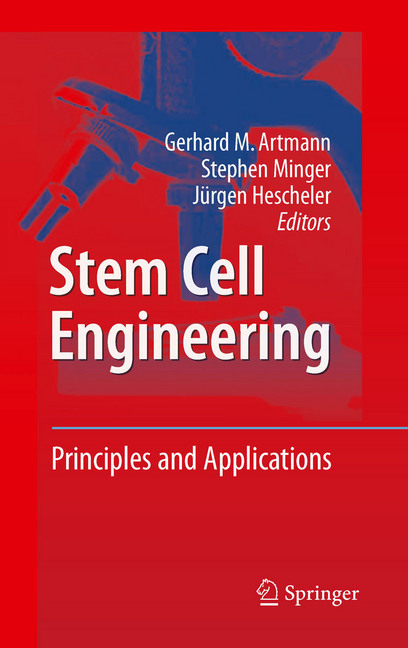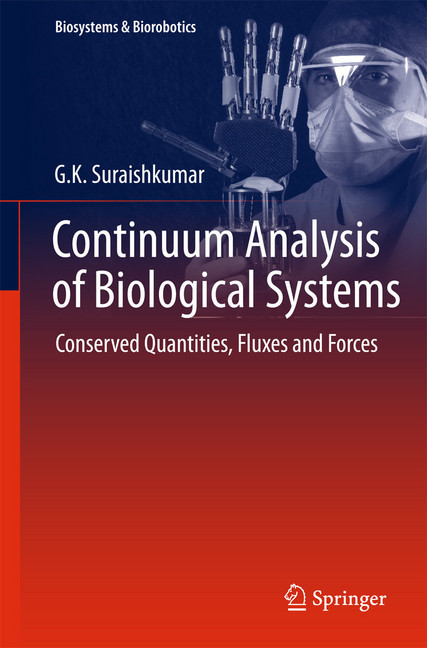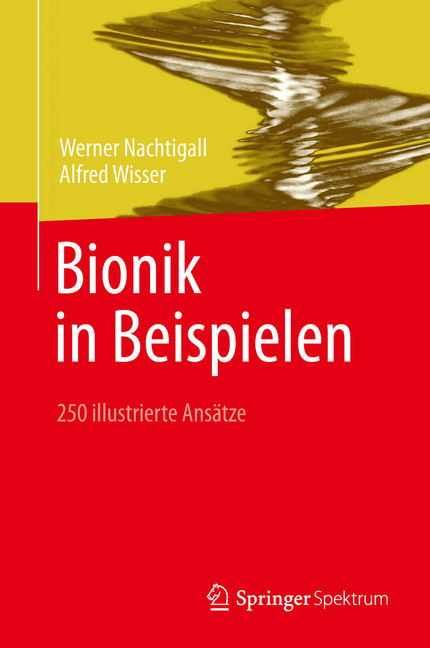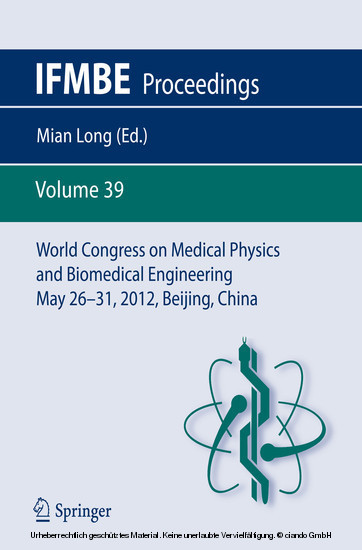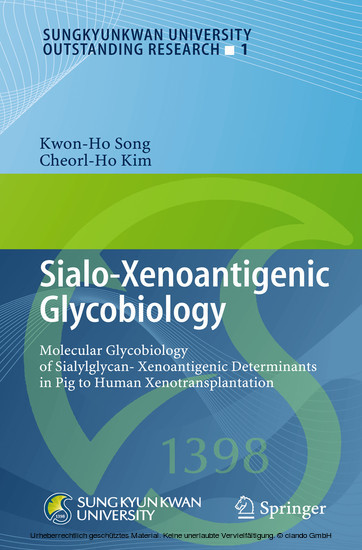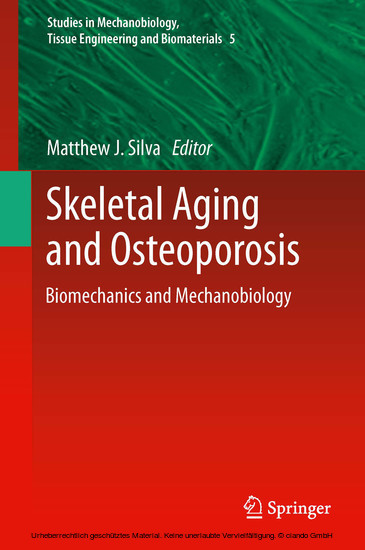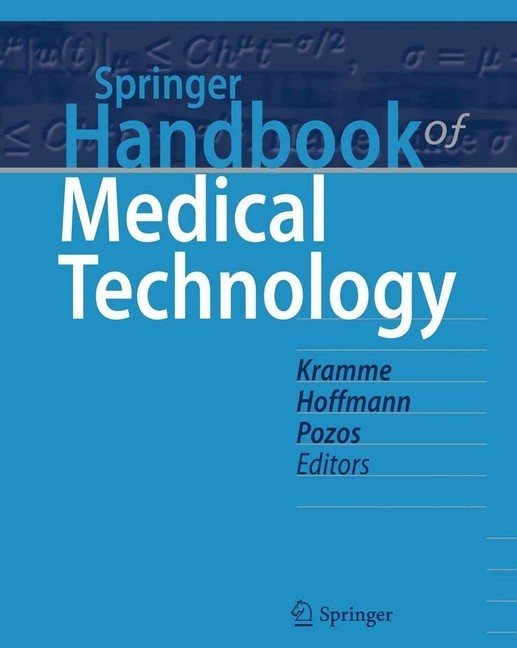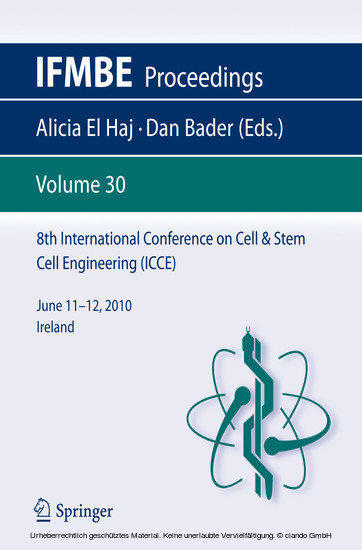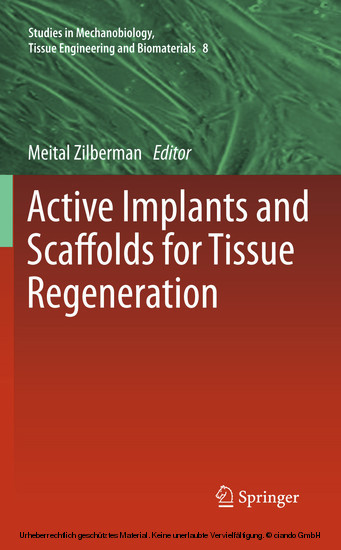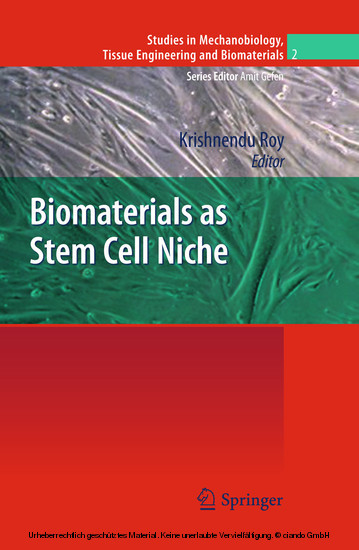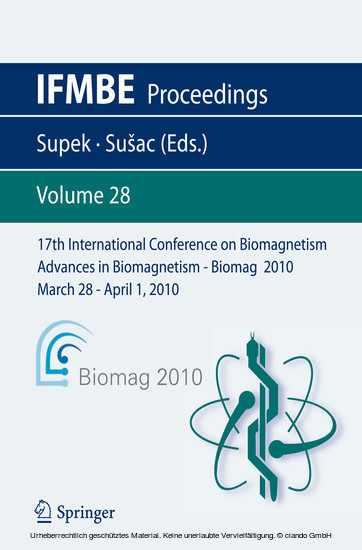Stem Cell Engineering
Principles and Applications
The potential of stem cells for healing and disease prevention in all fields of medicine is tremendous and has revolutionized the high-tech biomedical research. In this book, many of the most prominent researchers discuss the challenging topics of stem cell engineering, for example: Ethical issues of stem cell research; technological challenges, stem cell growth and differentiation, therapeutic applications, bioreactors and bioprocesses, high throughput and microfluidic screening platforms, stem cell identification and sorting, intercellular signaling and engineered niches, novel approaches for embryonic and adult stem cell growth and differentiation, stem cells and drug discovery, screening platforms. Stem Cell Engineering offers valuable background and reference for both the public and professionals including industrial staffers, faculty, researchers, engineers, students and scientific journalists.
1;About the Authors;52;Contents;303;Contributors;334;Editorial Board ;385;Part I Instead of an Introduction The Emperors New Legs;395.1;The Emperors New Body: Seeking for a Blueprint of Limb Regeneration in Humans;405.1.1;1 Introduction: A Dream of Regeneration;415.1.2;2 Biological Aspects of Regeneration;455.1.3;3 Regeneration Mechanisms: From the Hydra to a Human Being;475.1.3.1;3.1 Morphallactic Regeneration;485.1.3.2;3.2 Epimorphic Regeneration;495.1.3.3;3.3 Regeneration by Induction;525.1.4;4 Regeneration in Nonregenerators;525.1.5;5 Regeneration as Redevelopment;555.1.6;6 Blastema Formation Versus Scarring;595.1.7;7 Spatial Patterning of Morphogenesis;635.1.8;8 Limb Tissue Differentiation;685.1.9;References;706;Part II Basics and Basic Research;756.1;Engineering the Stem Cell Niche and the Differentiative Micro- and Macroenvironment: Technologies and Tools for Applying Biochemical, Physical and Structural Stimuli and Their Effects on Stem Cells;766.1.1;1 Introduction;776.1.2;2 The Micro- and Macroenvironment;796.1.3;3 Time;816.1.4;4 Biochemical Microenvironment;816.1.5;5 Physico-chemical and Mechano-structural Axes The Macroenvironment;836.1.6;6 Physico-chemical Factors;846.1.7;7 Mechano-structural Microenvironment;866.1.8;8 Putting It All Together Making Space for Engineers in Biology;896.1.9;9 Conclusion;906.1.10;References;916.2;Differentiation Potential of Adult Human Mesenchymal Stem Cells;956.2.1;1 Introduction;966.2.2;2 The Source of Mesenchymal Stem Cells;976.2.3;3 The Isolation of Mesenchymal Stem Cells;986.2.4;4 The Differentiation of Mesenchymal Stem Cells;1006.2.5;5 Biomaterials for Three-Dimensional Scaffolds;1036.2.6;6 Biocompatibility of Scaffold Materials;1046.2.7;7 Future Aspects;1096.2.8;References;1106.3;The Potential of Selectively Cultured Adult Stem Cells Re-implanted in Tissues;1126.3.1;1 Introduction;1136.3.2;2 AdultStem Cells in Cancer;1146.3.3;3 Isolation and Characterization Methods of AdultStem Cells;1176.3.4;4 Effects of AdultStem Cell Re-implantation into Tissues;1236.3.5;5 The Dorsal Mouse-Skinfold Window Chamber Method in Stem Cell Research;1276.3.6;6 Potential Applications of AdultStem Cells in the Future;1376.3.7;References;1436.4;Enhanced Cardiac Differentiation of Mouse Embryonic Stem Cells by Electrical Stimulation;1516.4.1;1 Introduction;1526.4.2;2 Common Routes Toward Cardiac Differentiation of mES Cells;1546.4.3;3 Electric Stimulation of mES Cell;1576.4.4;4 Functionality of mES Cell-Derived Cardiomyocytes;1636.4.5;5 Discussion and Outlook;1666.4.6;References;1696.5;The Therapeutic Potential of ES-Derived Haematopoietic Cells;1746.5.1;1 Introduction;1746.5.2;2 Pluripotent Cells;1756.5.3;3 Production of Haematopoietic Cells from ES Cells;1756.5.3.1;3.1Defining the Stages of Haematopoiesis In Vitro ;1766.5.3.2;3.2 Derivation of Transplantable ES--HSCs;1786.5.3.3;3.3 Derivation of Mature Haematopoietic Cells from ES Cells;1796.5.3.3.1;3.3.1 Macrophages;1806.5.3.3.2;3.3.2 Dendritic Cells;1806.5.3.3.3;3.3.3 Neutrophils;1806.5.3.3.4;3.3.4 Red Blood Cells;1816.5.4;4 Bioengineering and Processing;1826.5.5;5 Concluding Remarks;1826.5.6;References;1836.6;Genetic Modification of Human Embryonic and Induced Pluripotent Stem Cells: Viral and Non-viral Approaches;1906.6.1;1 Introduction;1906.6.1.1;1.1 Non-viral Delivery Systems;1916.6.1.2;1.2 Viral Delivery Systems;1946.6.2;2 Adenovirus;1946.6.3;3 Integrating Vectors for Stem Cell Research The Use of Retroviruses and Lentiviruses in Stem Cell Genetic Modification;1976.6.4;4 Induced Pluripotent Stem Cells: Gene Delivery Methods for Reprogramming Somatic Cells;1996.6.5;5 Conclusions;2056.6.6;References;2066.7;The Immune Barriers of Cell Therapy with Allogenic Stem Cells of Embryonic Origin;2116.7.1;1 Introduction;2126.7.2;2 Stem Cells Overview;2126.7.2.1;2.1 Embryonic Stem Cells;2146.7.2.2;2.2 Adult Stem Cells;2146.7.3;3 Induced Pluripotent Stem Cell
Artmann, Gerhard M.
Minger, Stephen
Hescheler, Jürgen
| ISBN | 9783642118654 |
|---|---|
| Artikelnummer | 9783642118654 |
| Medientyp | E-Book - PDF |
| Auflage | 2. Aufl. |
| Copyrightjahr | 2010 |
| Verlag | Springer-Verlag |
| Umfang | 547 Seiten |
| Sprache | Englisch |
| Kopierschutz | Digitales Wasserzeichen |

